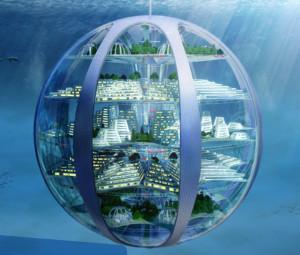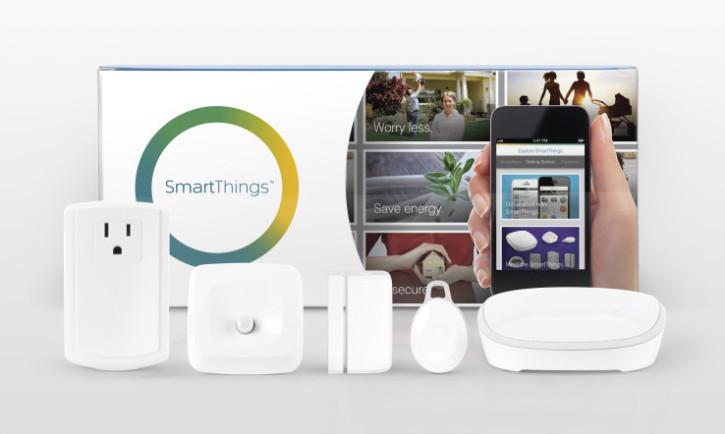According to Futurists We Will Be 3D Printing Underwater Cities, House-Moving Drones and Even Our Meals within 100 Years
 Being a futurist has to be a pretty great job. Not only do you get to spend all of your time thinking about how the world is going to be in the future, but no one is really going to be able to check your work because by the time we get to the future you’ll all be dead. There is no other job in existence where the need for provable results of your work is based entirely on the honor system. It’s essentially like being a science fiction writer within the subgenre “Possibly Attainable Real World” and there is no need to come up with compelling characters or find a plausible way to explain exactly how faster-than-light space travel is possible.
Being a futurist has to be a pretty great job. Not only do you get to spend all of your time thinking about how the world is going to be in the future, but no one is really going to be able to check your work because by the time we get to the future you’ll all be dead. There is no other job in existence where the need for provable results of your work is based entirely on the honor system. It’s essentially like being a science fiction writer within the subgenre “Possibly Attainable Real World” and there is no need to come up with compelling characters or find a plausible way to explain exactly how faster-than-light space travel is possible.
While I’m poking a little bit of fun, futurology is a very real scientific discipline, albeit a discipline that doesn’t really require much schooling or training beyond a vivid imagination. But the study of the future does have a place in the social sciences and is often a looser, unkept companion to history. The goal of Future Studies is to use examined cultural and technological momentum that is observable in the modern world and try to predict where it will eventually take us into the future. In order to be an effective futurologist a person generally has to have a solid grasp of a specific industry or a conventional field of study paired with a more general understanding of an ancillary or companion industry that will intelligently inform their predictions.
Futurists can be novelists and artists of course, but you’re also just as likely to find anthropologists, economists, historians, philosophers, engineers and psychologists. Notable futurists include educators like Carl Sagan, computer scientists like the legendary Grace Hopper, science fiction writers like Gene Roddenberry and George Orwell, comic book writer Warren Ellis (author of Transmetropolitan, read it.) and robotics experts like Joanne Pransky. Futurists are often employed by companies and governments to identify potential trends that will impact their business and predict the potential outcomes of new technologies and emerging markets.
The Samsung-owned internet of things firm SmartThings recently brought together a group of futurists to look ahead a hundred years and try to predict what impact emergent technologies, connected devices and cultural trends will have on us. Their report, called The SmartThings Future Living Report, is full of some rather incredible, but plausible, possibilities for a future that includes where we’ll live, what we’ll eat and how our homes and consumer products will be made. The academics who helped compile the report include space expert Dr. Maggie Aderin-Pocock, architect Arthur Mamou-Mani, educator and designer Toby Burgess, noted urban planner Linda Aitken and urban designer Els Leclercq.
“Our lives today are almost unrecognisable from those a century ago. The internet has revolutionised the way we communicate, learn and control our lives. Just 10 years ago, technology like SmartThings would have been inconceivable, yet today developments like this let us monitor, control and secure our living spaces with the touch of a smartphone. Over the next century we will witness further seismic shifts in the way we live and interact with our surroundings – working on the SmartThings Future Living Report with a panel of industry experts has allowed me to explore what these could be,” said report co-author Dr. Maggie Aderin-Pocock.
According to the report, 3D printing and additive manufacturing technology is expected to play a more than significant role in the future of humanity. According to the report, in 100 years not only will our individual homes be almost entirely 3D printed, but massive structures like mega-skyscrapers will also be made using on-site, large-scale 3D printers. Humans will also start to look downwards and could potentially live in “earthscrapers” which are large city-structures that can extend more than twenty-five stories into the ground. Humans will also inhabit the watery depths of the ocean in large “bubble cities” that will allow us to colonize the many large bodies of water on Earth.
Large-scale 3D printing technology will allow every detail of our homes, furnishings and environments to be completely customizable to an individual’s specific tastes and needs. It would even be possible that our homes can be 3D printed replicas of famous homes and structures. All of our homes will have a smaller-scale 3D printer inside of them that will be as common as a stove or a refrigerator is today. They will be capable of using multiple materials and fabrication techniques, allowing complex consumer products to be downloaded from the internet and printed right in our homes. Larger products can be taken to local 3D printing service providers who can fabricate our furnishings, vehicles and even high-tech drones that can be used as transportation or to move our entire houses all over the planet.
Even our food will be 3D printed, with meals prepared by famous chefs and cooks that can be downloaded and printed right in our homes. Virtual reality and holograms will allow us to communicate and interact with people on the other side of the planet. Electrodes can be attached to our bodies that will transmit realistic touch, smells and sounds directly to our brains. Within 100 years both the moon and Mars will have been colonized and space travel will be commonplace. And our homes will be even smarter than us, capable of intuiting our needs and full of technology like LED walls that can be altered to change based on our moods, or instantly redecorated. Our future is going to be so bright that we gotta 3D print shades.
The fantastic Future Living Report was sponsored by SmartThings, which is an open platform home ecosystem that can be used to turn any home into a smarthome. SmartThings was acquired by Samsung back in 2014 and has since tripled in size, their developer activity has grown to a community of over 20,000, and it is one of the largest ecosystems of connected and compatible devices. The company is located in Palo Alto, CA and is operated as an independent subsidiary of Samsung Electronics. You can learn more about SmartThings here, and you can read the entire Future Living Report here. Do you think this report is on target? Discuss in the 3D Printing in 100 Years forum over at 3DPB.com.
Subscribe to Our Email Newsletter
Stay up-to-date on all the latest news from the 3D printing industry and receive information and offers from third party vendors.
You May Also Like
Gorilla Sports GE’s First 3D Printed Titanium Cast
How do you help a gorilla with a broken arm? Sounds like the start of a bad joke a zookeeper might tell, but it’s an actual dilemma recently faced by...
Nylon 3D Printed Parts Made More Functional with Coatings & Colors
Parts 3D printed from polyamide (PA, Nylon) 12 using powder bed fusion (PBF) are a mainstay in the additive manufacturing (AM) industry. While post-finishing processes have improved the porosity of...
$25M to Back Sintavia’s Largest Expansion of Metal 3D Printing Capacity Since 2019
Sintavia, the digital manufacturing company specializing in mission-critical parts for strategic sectors, announced a $25 million investment to increase its production capacity, the largest expansion to its operations since 2019....
Velo3D Initiates Public Offering in a Bid to Strengthen Financial Foundations and Drive Future Growth
Velo3D (NYSE: VLD) has been among a number of publicly traded 3D printing firms that have attempted to weather the current macroeconomic climate. After posting a challenging financial report for 2023,...





































